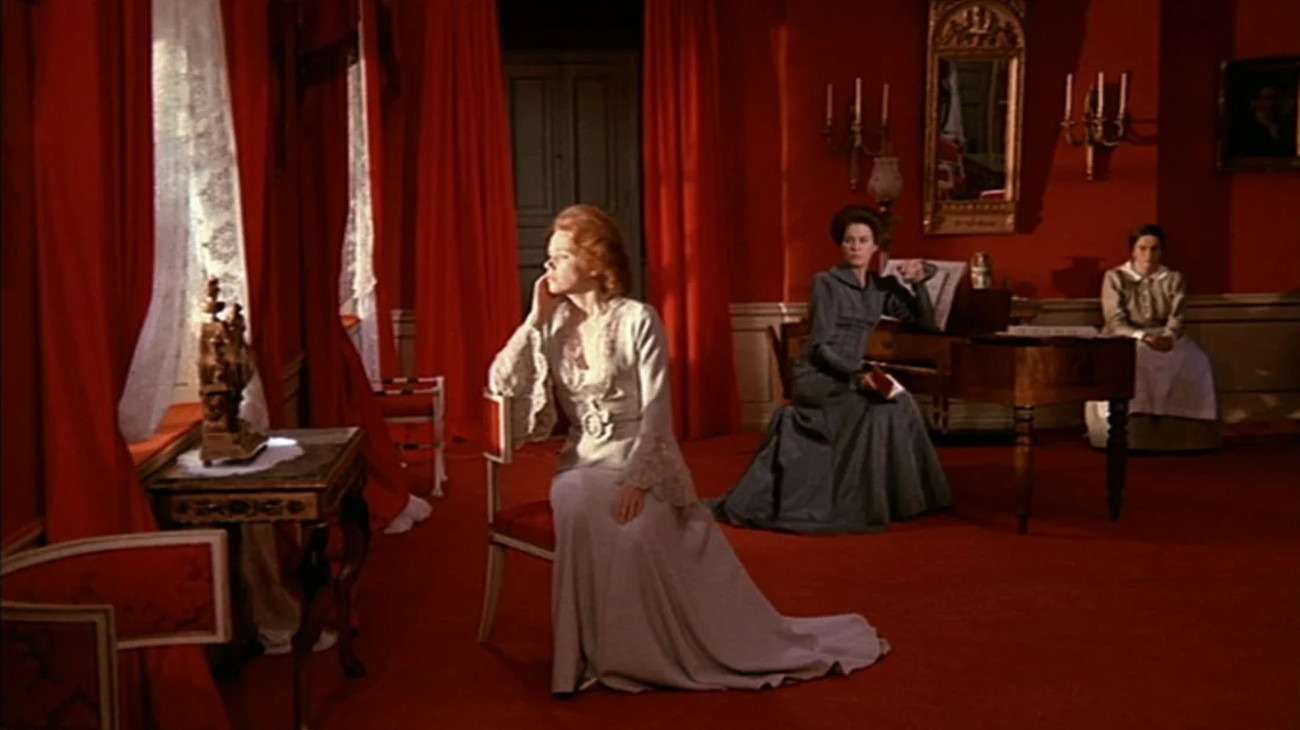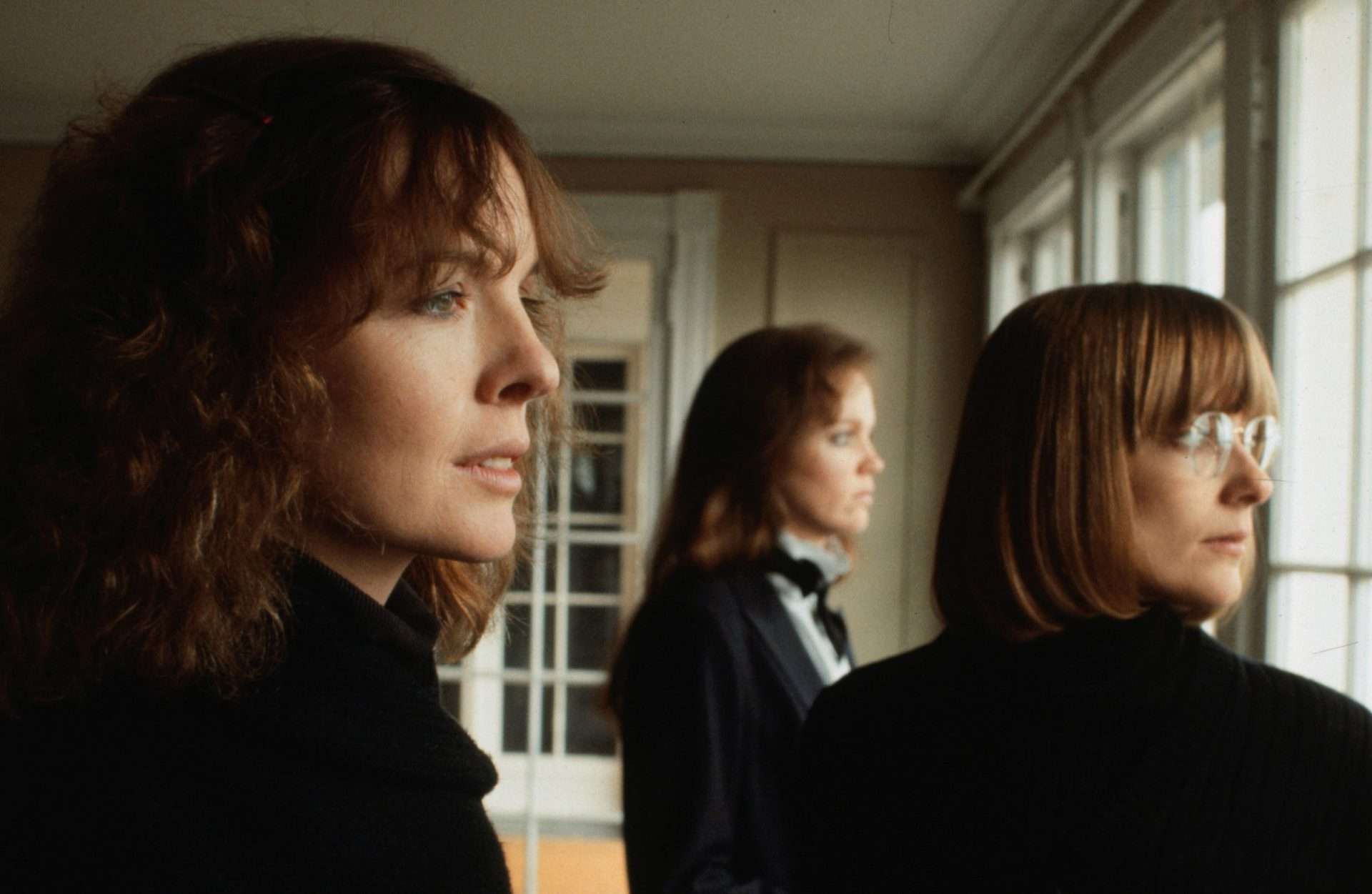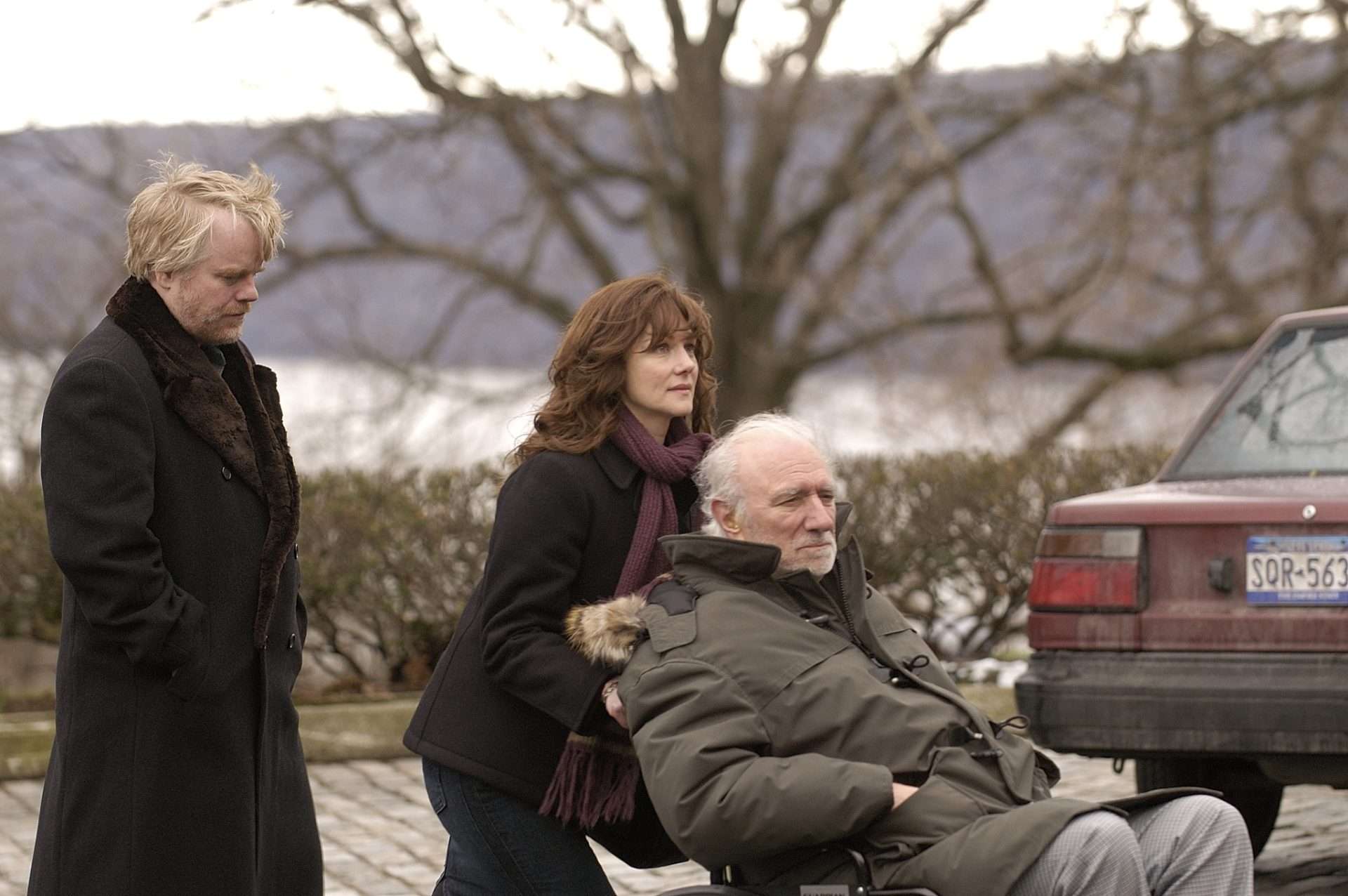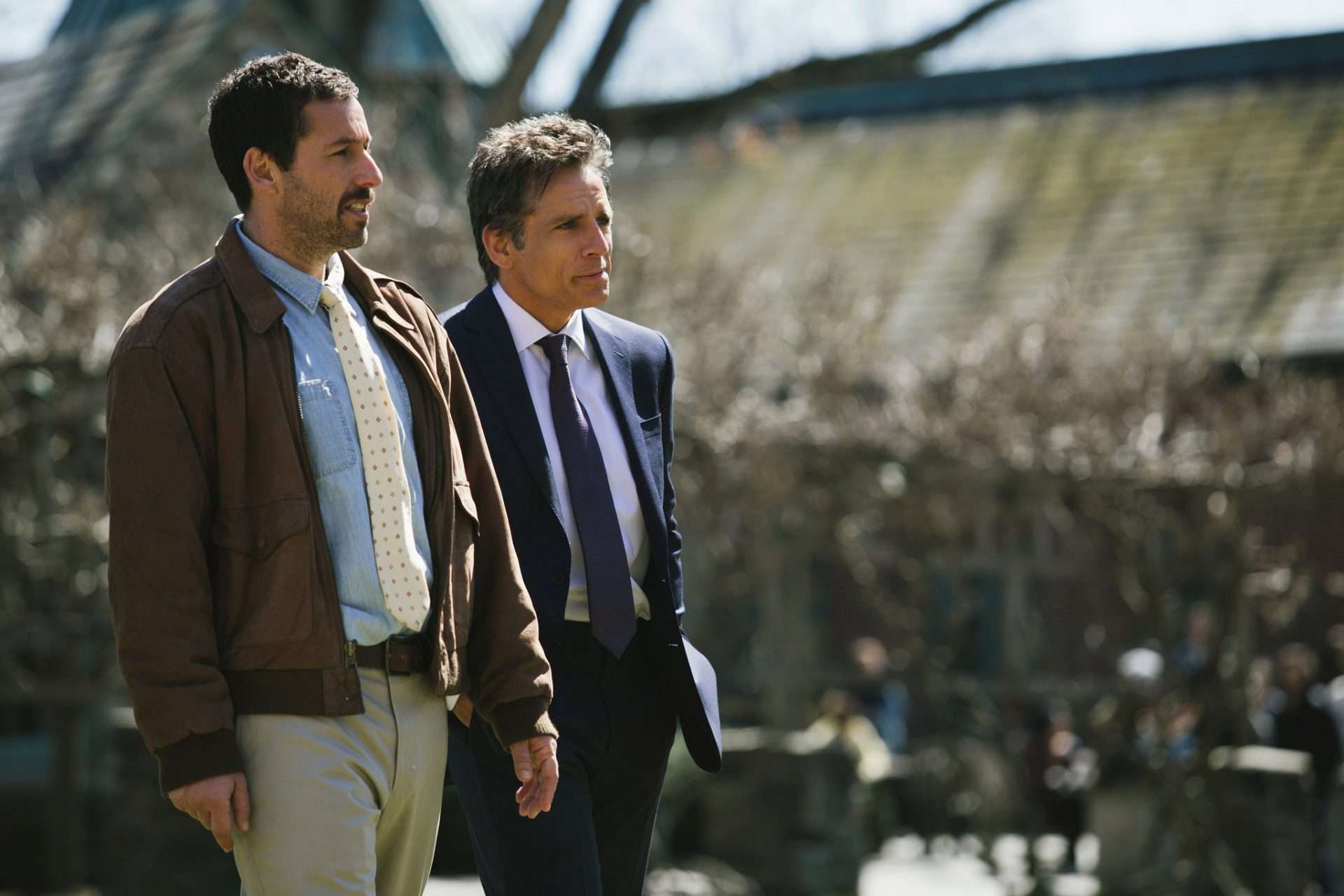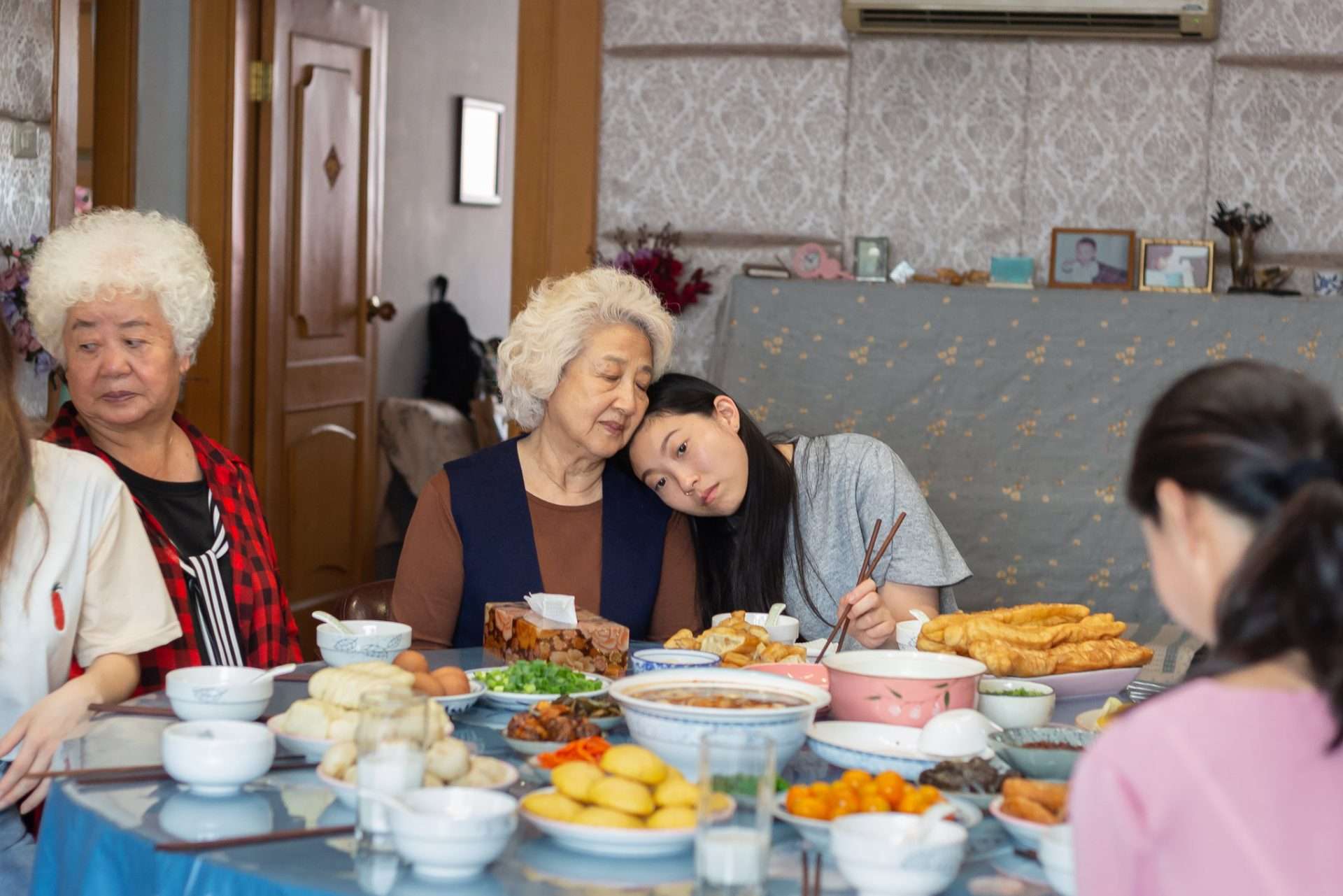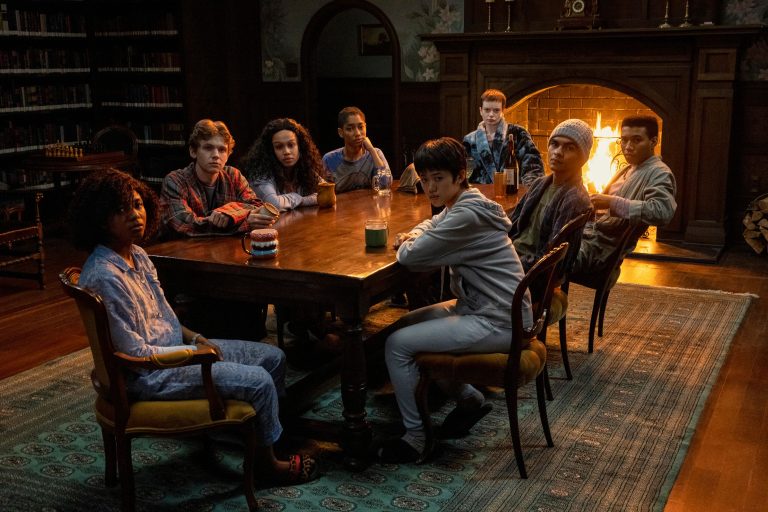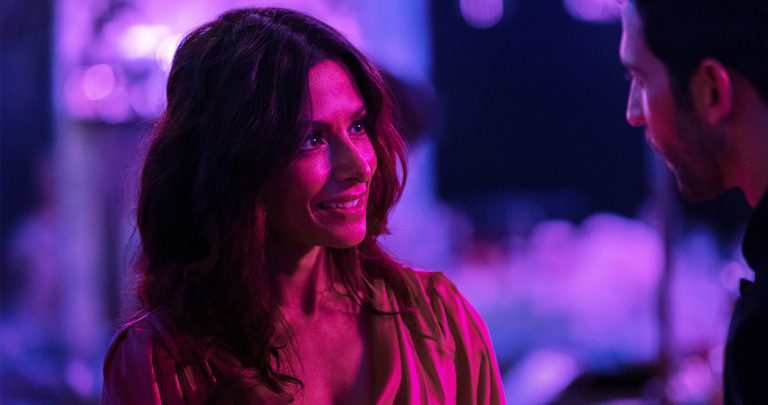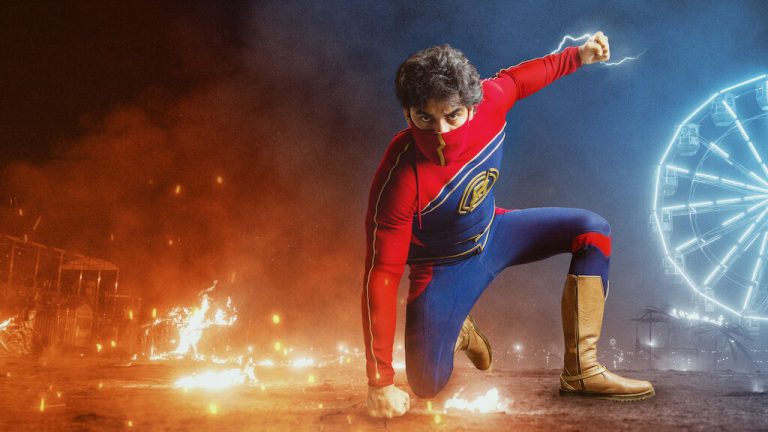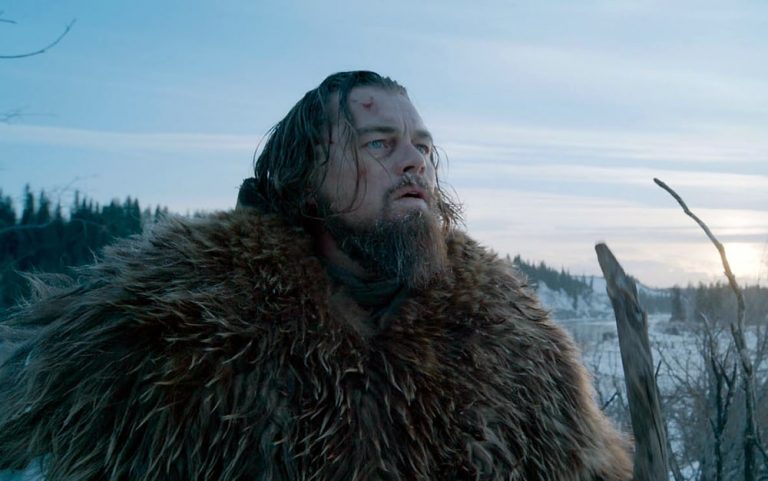“His Three Daughters” on Netflix follows Katie, Christine, and Rachel, three distant sisters who return to NYC to care for Vincent, their ailing father. Katie has a family in Brooklyn. Christine also has her own outside the city, whereas Rachel is unmarried and has been staying in their father’s apartment, taking care of him. They all have distinct personalities shaped by their experiences before and after starting their own families. So, they express themselves differently. In this critical situation, these feelings intensify.
Katie is blunt and forthright and says things as she thinks or feels them. Rachel is also outspoken but reserved about sharing what she truly feels. Christine feels everything profoundly and expresses herself in probably the healthiest manner. Beyond their outward personalities, layers of underlying traits and sentiments slowly unravel through the course of the film. Written and directed by Azazel Jacobs, the film aptly explores the complicated relationship between these three women through their well-realized and well-defined portraits.
“His Three Daughters” features thoughtful performances by its talented central cast of Carrie Coon, Elisabeth Olsen, and Natasha Lyonne and a naturalistic dialogue-driven script where every single word contributes to the film’s overall impact. The script masterfully handles the emotional burden of impending grief where the family is stuck in a limbo state, aware of the father’s impending death but unsure of how to think or feel about it.
If you liked “Three Daughters” and want something on a similar note, here are a few movie suggestions to watch:
6. Cries and Whispers (1972)
Ingmar Bergman’s “Cries and Whispers” (Viskningar och rop) is a striking portrait of sisters coming to terms with loss and impending grief. This Swedish film revolves around three sisters: Agnes, who’s dying of cancer, and Maria and Karin, who have been battling issues in their respective marriages. All these conflicts converge as they reunite to care for ailing Agnes. Underneath its biblical themes and interpretations lies the narrative about the emotional distance between the sisters that widens through miscommunication or the lack of dialogue.
“Cries and Whispers” unfolds like a theatrical play in limited indoor spaces. Its inherent drama makes their screams seem even louder and whispers more hushed. The camera focuses mainly on the characters’ faces, composing them so tightly and meticulously that avoiding even the tiniest freckle on their skin becomes impossible. As a character says in the film, you can feel their bodies’ presence or their hands’ warmth. This intense drama was nominated for multiple Oscars and won for its cinematography by Sven Nykvist. It’s an apt follow-up if you want to watch something stylistically and thematically similar to “His Three Daughters.”
5. Interiors (1978)
The 1978 film, “Interiors” revolves around Renata, Flyn, and Joey, three distant sisters, who return to their family home in the wake of a family tragedy. Their parents suddenly decide to get a divorce after a shocking incident that shakes up the foundation of what the sisters knew about their parents. While dealing with the tragedies in their respective lives, they face the emotional burden of loss and heartbreak regarding their parents. As they deal with their interpersonal conflicts, the sisters have to deal with the end of a relationship they once held dear.
“Interiors” happens almost entirely indoors, where the performances affect us more deeply than any other cinematic tool. Diane Keaton, Kristin Griffith, and Mary Beth Hurt bear the burden of the film’s pathos and offer us a closer look into their troubles. The script skillfully examines the toll such tragedies take on siblings who grow apart. It neatly lays out character traits instead of relying on heavily dramatized performances. For all these reasons, it is a must-watch after “His Three Daughters” if you want a similar gut-wrenching experience.
4. The Darjeeling Limited (2007)
Wes Anderson’s “The Darjeeling Limited” follows Jack, Peter, and Francis, three distant brothers who reunite to reconcile a year after their father’s death. They travel to India and set out on a long journey across the country in hopes of dealing with their grief spiritually. The trio embarks on a whirlwind of chaotic adventures, forcing them to confront their grief head-on and navigate the tangled web of emotions they had been avoiding. It also forces them to introspect and connect like emotionally mature adults.
The film is defined by Anderson’s trademark narration style, further amplified by the country’s vibrant faces and places. Moreover, it evokes a sense of pathos while analyzing the brothers’ respective ways of dealing with their father’s loss. They confront themselves and each other and are vulnerable despite their differences. Much like “His Three Daughters,” it paints a moving portrait of siblings trying to make peace with the loss and move on with their lives. It shares enough insights into the characters’ psyche to keep us invested in their anguish.
3. The Savages (2007)
Tamara Jenkins’s “The Savages” follows Wendy and Jon Savage, two distant siblings in their forties who get back together to take care of their ailing father. Wendy is a writer who pays her bills through temporary gigs. Jon teaches theatre to impressionable youth and stays in the hope of a prestigious grant. They both have commitment issues, making it harder for them to be in romantic relationships. Regardless, they realize the truth about their father’s poor health and join hands to offer help.
The film shows Wendy and Jon’s conflicting views on how to care for their father in the twilight years of his life. These views are rooted in their understanding of each other’s lives and their worldviews. Much like Azazel Jacobs’ “His Three Daughters,” their conversations take up the most space in “The Savages.” However, these conversations are equally illuminating, revealing more about characters, their hopes and fears, without an overwrought sentimentality. This 2007 film also highlights the aforementioned limbo state and analyzes grief with emotional maturity. For all these reasons, “The Savages” can be a bittersweet, albeit funnier, follow-up to the brilliant “His Three Daughters.”
2. The Meyerowitz Stories (2017)
“His Three Daughters” feels peculiarly NYC in ways only NYC narratives can be. It shows characters cutting each other through dialogues with articulate opinions that feel surprisingly organic. “The Meyerowitz Stories” feels the closest to it in that regard, which may have to do with Noah Baumbach and Azazel Jacobs having lived much of their lives in the city. Regardless, both films follow a group of dysfunctional adult siblings navigating their feelings toward each other impacted by their father’s presence.
“The Meyerowitz Stories” revolves around an estranged family gathering for a family event concerning Harold, their artistically gifted father. It follows Danny, Jean, and Matthews, three siblings living under Harold’s shadows despite being adults in their forties. Noah Baumbach’s script is largely conversational, with dialogues revealing distinct traits of the family members and making their inherent dysfunctionality transparent. The clever writing choices allow us a closer look into their pasts while seamlessly balancing their humor with drama. So, it’s a worthy follow-up to the poignant Netflix release.
1. The Farewell (2019)
Lulu Wang’s “The Farewell” follows a Chinese family that reunites to take care of their grandmother diagnosed with a terminal illness. Since she has less time to live, they organize a wedding to honor her wishes before her death. The script mainly focuses on Billi, her 30-something American-Chinese granddaughter, struggling to make a living in New York as a writer. She learns the family’s shocking decision not to let the grandmother learn about her diagnosis.
While Billi holds on to her reservations, the family hides their distress and pretends to be happy so as not to affect her emotional well-being. The film shows all family members coming to terms with the likely loss. Their reactions reflect aspects of their past, where or how they were brought up, their philosophies, and the respective culture’s impact on them. Just like “His Three Daughters,” “The Farewell” is a poignant look into the grueling process of caring for people we may lose soon. Lulu Wang’s insightful script encapsulates cultural nuances and deals with grief with a soulful understanding.


